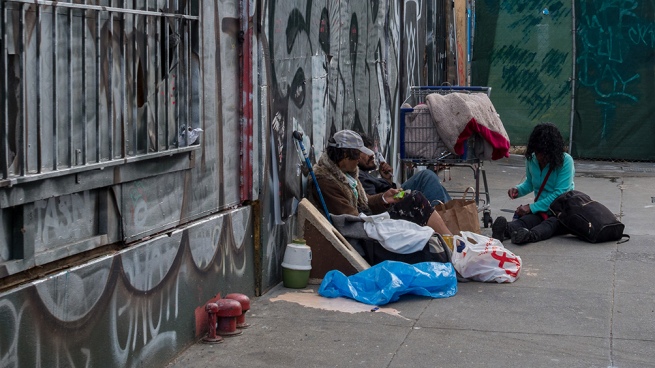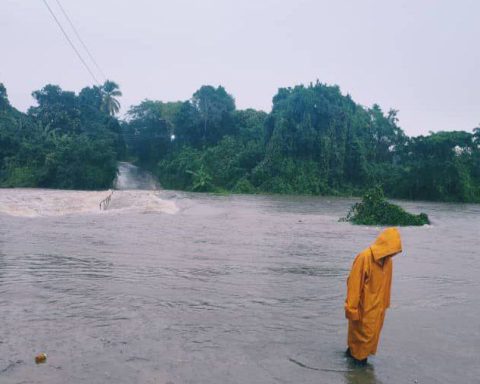The poverty rate fell to 37.3% in the second half of last year, below the measurement of the first half of 2021, when it was 40.6%, and 42% in the same half of 2020, reported the Institute National Statistics and Census (Indec).
Meanwhile, the indigence index, understood as the percentage of people whose income is not enough to procure the minimum amount of food, it stood at 8.2% at the end of the second half of last year, against 10.7% in the first half and 10.5% of the same period of 2020.
Based on the Indec numbers, in the last semester of 2021 more than 920,000 people left the poverty line compared to the same period in 2020, due to the fact that between one period and another there was a decrease of 4.7 percentage points between the two. measurements.
This reduction in poverty had its correlate in the level of activity of the economy, which throughout 2021 marked an increase of 10.3%, after falling 9.9% in 2020.
Thus, With an estimated population of 45 million people, these figures imply that around 16.6 million are in a situation of poverty, and of that total 3.6 million are indigent..
By ages
By age group, despite the fact that the highest level of poverty occurs between 0-14 years, with 51.4% of the people that make up this group, this was -at the same time- the one that reduced its rate the most in the last year (-2.9 pp six-monthly and -6.3 pp year-on-year): followed by the 15-29 year old with a poverty rate of 44.2% (-4.3 pp six-monthly and -5.0 pp year-on-year).
The group between 30 and 64 years old also reduced its poverty rate, in this case to 32.6% of the population (-3.7 pp six-monthly and -4.6 pp year-on-year); while the group of 65 years and over was the only one with an increase in its poverty rate in the interannual comparison (13%; -0.8 pp per semester and +1.1 pp interannual).
Finally, child and adolescent poverty (0-17 years) was 51.8%, with a rate of 54% in the case of adolescents (12-17 years).
By region
The city with the highest poverty rate was Gran Resistencia, in Chaco, with 52%, where one of the highest indigence rates was also recorded, with 19.4%.
Followed by Concordia, in Entre Ríos, with 51.5% of people below the poverty line and 10.5% indigent.
Then Greater San Luis was noted, with 47.8% of poverty; Formosan, 45%; Mendoza, 44.6%; Tucuman, 42.7%; Greater Buenos Aires, with 42.3%.
Regarding the measurement by region, Cuyo was the one that marked the highest poverty rate with 42.7% and was the only one to be located above 40%.
The NEA, for its part, registered a mark of 39.4%; the NOA, 39.2%; Greater Buenos Aires, 37.5%; the Pampas region, 35.2%; and Patagonia, 31.5%.
Kulfas: “It was very nice to talk about zero poverty, but you have to work with reasonable goals”
The Minister of Productive Development, Matías Kulfas, questioned former President Mauricio Macri by stating that “it was very nice to talk about zero poverty”, but affirmed that “we must work with reasonable and credible goals”, highlighting the reduction of 4.7 percentage points registered in the last semester of 2021 in the index that poverty with respect to the same period of 2020.
The National Institute of Statistics and Censuses (Indec) released this afternoon the poverty and indigence data for the second half of 2021, which revealed that 2.1 million people came out of poverty between the end of 2020 and the end of 2021, and close to 1 million left the condition of indigence.
During a press conference he gave at Government House, Kulfas assured that the figures show that “the path taken is giving results, Argentina is growing, generating employment and lifting many people out of poverty on the basis of production and work “.
When assessing the reduction of poverty levels, the minister questioned the Cambiemos administration by asserting that “it was very difficult to speak of zero poverty, but we must work with reasonable and credible goals.”
On the occasion of presenting details of the Argentina Productiva 2030 Plan at a press conference, Kulfas said that economic activity “in the short term is working much better and in the long term it must be pointed out that once in a lifetime it can be lasting , producing more with more Argentine work and exports that balance the balance of payments”.
Moments later, through his account on the social network Twitter, Kulfas added that the drop in poverty “is consistent with the sharp drop in unemployment recorded in 2021 and with the deep economic recovery.”
“However, it is very insufficient for the Argentina that we want,” he acknowledged. We know that the inflationary acceleration of recent weeks has a significant impact on the basic basket and on the income of the most humble, therefore, the highest priority of economic policy is being the stabilization of prices”.
With the premise of being able to think “beyond this situation, which in part has to do with the war between Russia and Ukraine and in part with the chronic inertia, it is essential to think in the medium and long term.”
In this sense, he explained that the plan “Productive Argentina 2030 was designed so that Argentina produces more, multiplies jobs throughout the country and reduces poverty and indigence year after year.”
“Argentina Productiva 2030 proposes 10 productive missions in various axes. Thus, we will transform the productive structure, generating 2 million registered private jobs and reducing poverty by 9 million people by 2030,” he predicted.
Permanent Household Survey
The Indec report detailed that the percentage of households below the poverty line (LP) reached 27.9% in the second half of 2021; where 37.3% of people reside.
Within this group, 6.1% of households are below the indigence line (LI), which includes 8.2% of people. This implies that, for the universe of the 31 urban agglomerations of the EPH, below the LP there are 2,633,905 households, which include 10,806,414 people; and, within this group, 578,282 households are below the LI, which represents 2,384,106 indigent people.
The numbers come from the Permanent Household Survey (EPH) in which a total of 31 large urban agglomerations were surveyed, with a population of 28,992,734 people and 9,438,538 households.














